29 July 2003: Dorset, England
Norway
I had two good reasons to come to Norway. Magnhild (Meg), whom I had met in the Cook Islands and again in Thailand and Cambodia, had offered to show me her part of the country, and Aase, who I met right at the start of the trip in Iceland, had offered to take me along on a sailing trip. How could I possibly refuse?
Trondheim
Trondheim is probably Norway's most historic city - more so than Oslo, as even the monarchs are crowned in Trondheim's cathedral. The city centre is quite pleasant but the cathedral and adjacent archbishop's palace are the highlights. The cathedral is dedicated to Saint Olav - more about him in a while - and is very much in the same style as the great medieval cathedrals of Britain and the rest of Europe. It's almost as if the pope had sent out a standard set of building plans. Unfortunately a few bits fell down over the years and today the most obvious bit - the west front - is actually the most modern, built in the 19th century. The archbishop's palace grew and shrank in size over the years with the importance of the archbishops, and then in the 80s a chunk burnt down. This provided a good opportunity for some archaeology and they found some interesting old structures, including a well-preserved mint, which can be seen in situ in the museum, periodically being sprayed with water to keep it moist. They also have some nice bits of sculpture - heads of figures from the west front, for example. They had originally been part of the cathedral but were reused as rubble fill when a collapsed section was rebuilt. It is nice to see these things close up - I doubt that the medievals had much better eyesight than we do or that the cathedral was better lit, so they were probably never easy to admire.

Trondheim's other world-famous attraction is its cycle lift. The idea is to pull bikes up one of the city's steep hills. I went out of my way to locate it, only to find that it was being dug up for repairs!
Levanger
My friend Magnhild lives - for the summer at least - with her family in Levanger, about 100km north of Trandheim on the shore of the Trondheim fjord. Trondheim fjord is Norway's third longest, but it is surrounded by rather flatter countryside than the fjord country further south. Because it's not so mountainous this area is agriculturally important with lots of crops almost ready for harvest and locally-produced strawberries for sale everywhere. I borrowed a bike to explore for a couple of days, and got as far as a lake called Tomtvatnet, 279m up. It was a mixture of surfaced and unsurfaced roads, with quite a few wild flowers in the roadside verges at the top. The lake even has waterlillies floating about on it! It was also warm enough to swim in, but I never found a sufficiently non-muddy place to get in.
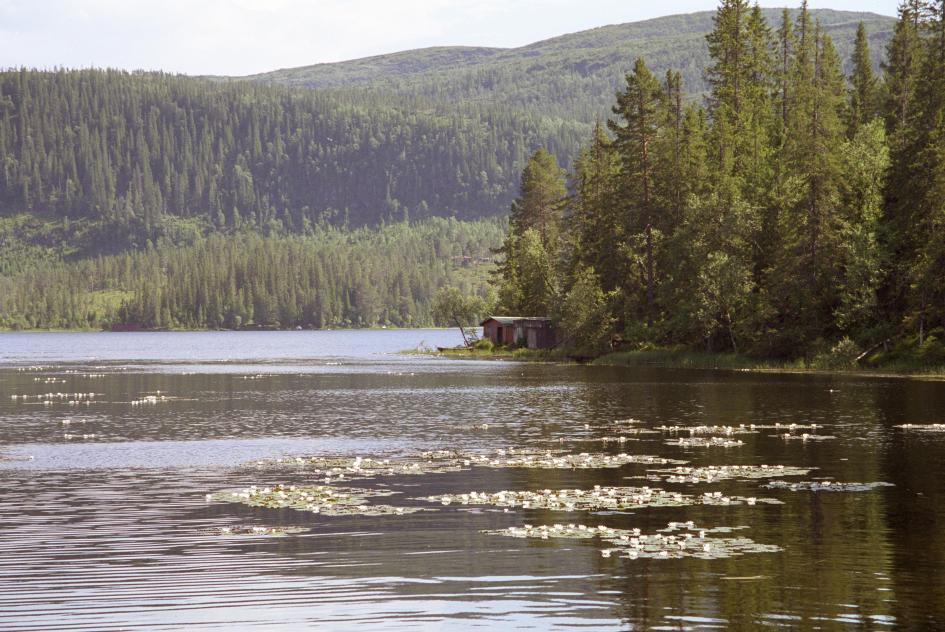
Sticklestad
The local historical attraction is Sticklestad, the site of a battle in 1030 when King Olav died. To put this in context, Olav was two kings before Harald Hardrada who tried to invade England in 1066 and was defeated at the battle of Stamford Bridge. Olav had fled eastwards in 1028 to escape a rebellion and returned in 1030 to regain his thrown. But an army of essentially leaderless peasants who would rather not be ruled by him won. Olav was already a Christian but the peasants weren't, so his death was seen as a martyrdom and lots of miracles were attributed to him - a blind man had his sight restored, his body did not decompose and so on. The cult of "Saint Olav the Holy" became very widespread as can be seen from the distribution of churches dedicated to him all over Europe, including many in Britain. Today there are a couple of exhibitions and some old country buildings at the site, along with a very old church.
Sailing
I didn't really know what to expect when I accepted Aase's offer of a few days sailing up the Norwegian coast in a traditional 14m square-rigged boat. When I arrived in Bronnosund it took some time to find our boat "Vagar" amongst all those moored there for the town's festival of traditional boats. It was hard to see the names but I could immediately rule out the boats that looked too new, too small or were made of steel. Eventually I found it - a wooden boat with no deck and a cabin taking up about the back quarter. It was built just a few years ago but is a replica of a boat built in 1870, though with a few modern safety features (like a discreetly concealed engine) added. It is called a Nordlandsbat and would have been used primarily for fishing. But to my untrained eye it doesn't look much different from the type of boat that the vikings had.
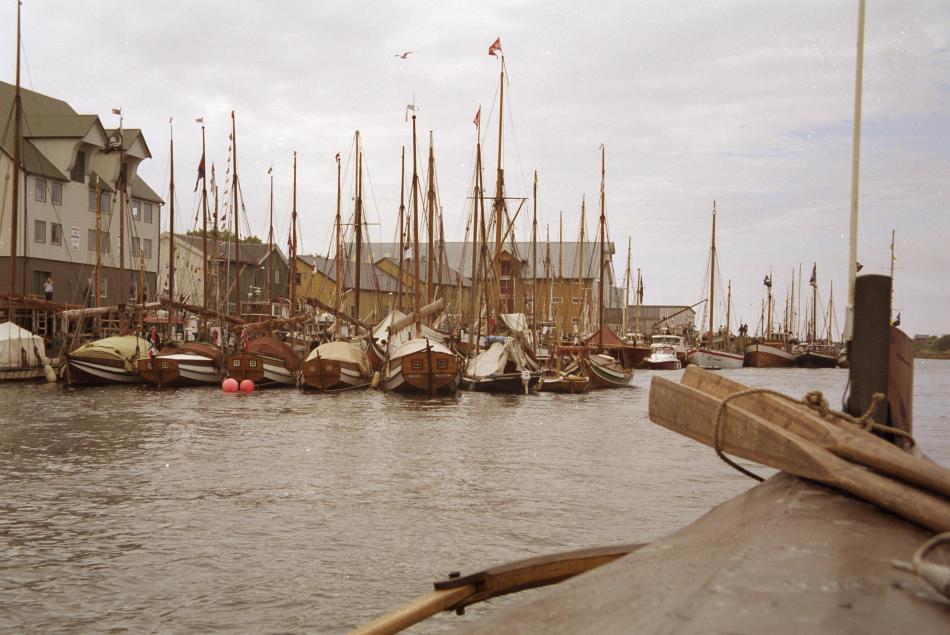
In fact the design is more anchient than that - it doesn't look much different from the late bronze age Argo of Jason and the Argonauts. Compared to Tim Severin's reconstruction of the Argo, Vagar is a couple of metres shorter, and they had 20 oars while we had only 8 or 10 (and used at most 4 when manouevering in an anchorage). Our main sail is slightly bigger than theirs and comes down when not being used whereas theirs is furled upwards. We also had a top sail. They used steering oars while we had a rudder and they had no cabin. But apart from all that you couldn't tell the difference, and I'm sure Jason would have had no trouble at the helm of Vagar!
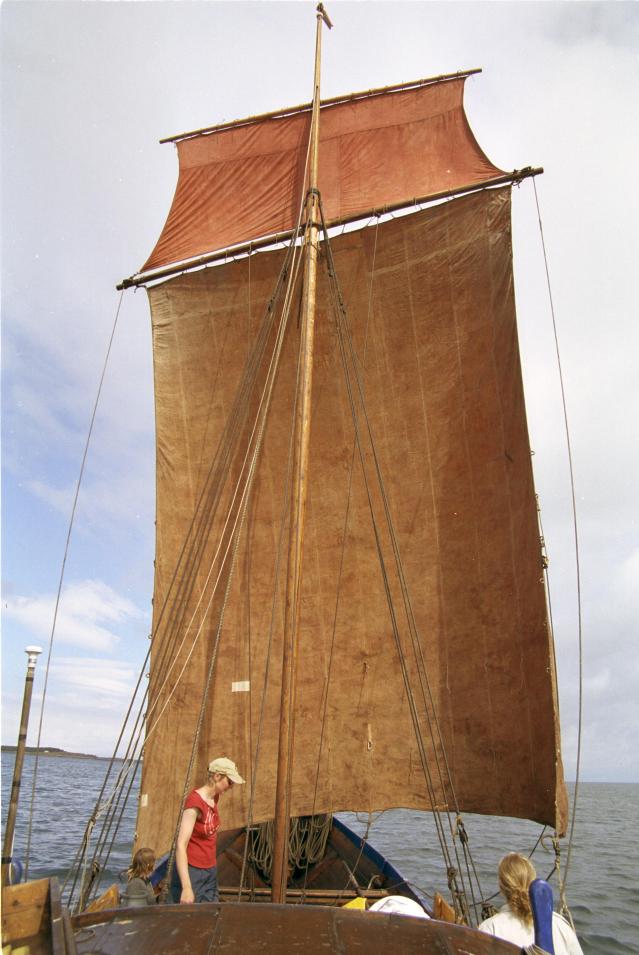
That was us with the sail up. Here we are using arm power to get into a harbour:
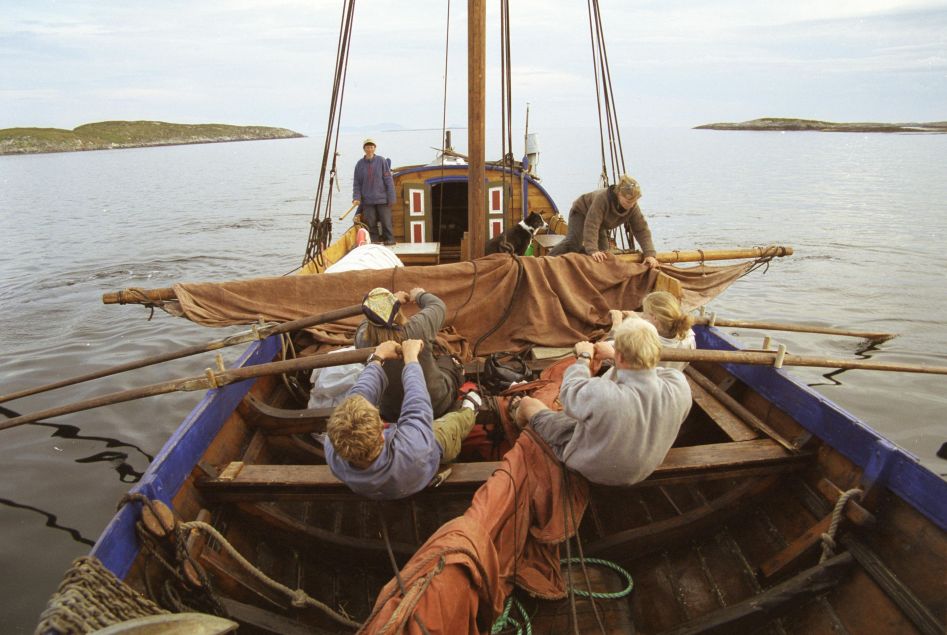
On the first day we started sailing northwards with the wind behind us and made good progress, but for most of the rest of the trip the wind was from the wrong direction and we had to slowly tack our way along. Apparently our square rig is actually faster than a modern yacht with the wind behind, but sailing into the wind you can't get as close to the wind as a triangular sail will. At best we travel four times as far as the straight-line distance! But for most of the time the weather was fine and relaxing in the boat, periodically getting up to change tack, was very pleasant.
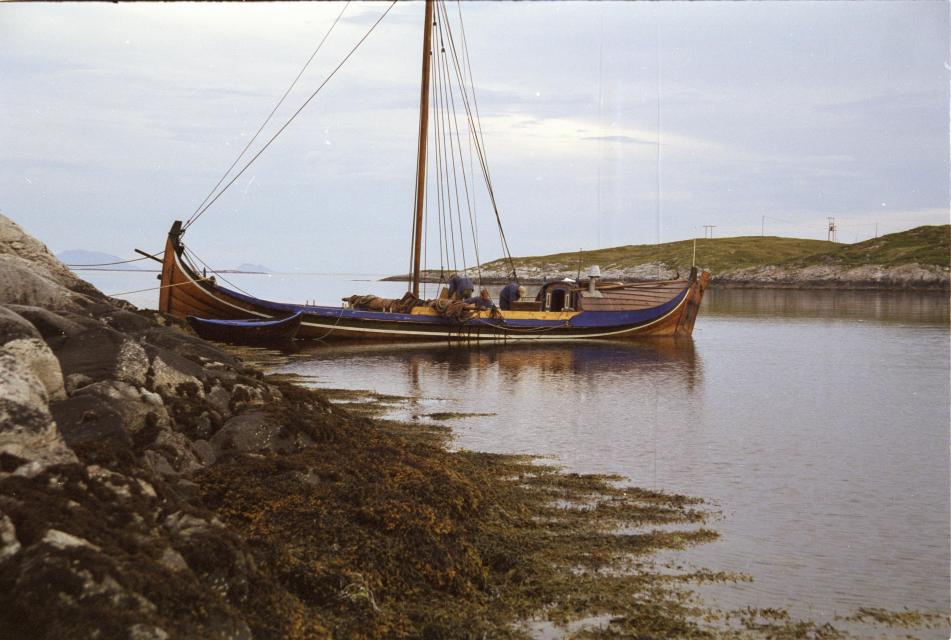
We spent the nights moored on some small islands; the first inhabited with a cafe made largely from things found on the beach (and it looks like that must have included a lot of brand-new timber). There were lots of wild flowers, including these lovely little violets:
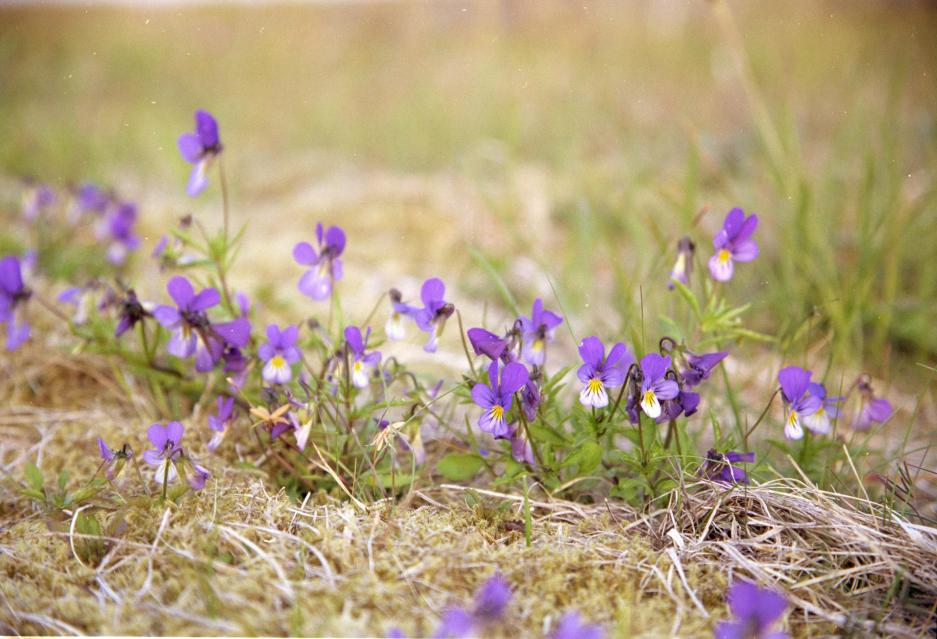
The second was on an uninhabited island full of cloudberries and blueberries, and my last couple of nights on the island of Lovund. This island has a distinctive shark's-fin profile (the top is about 600m high) and we had been able to see it from a long way away. But the last leg to get there was a bit exciting.
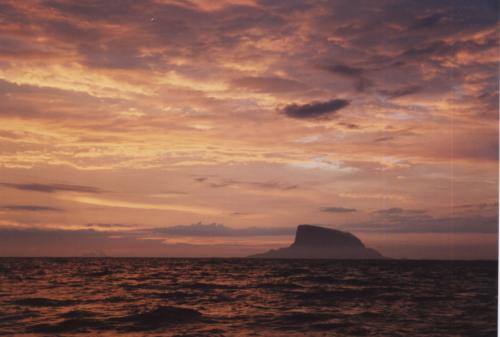
We knew that it was going to be a long day as we really wanted to get to Lovund and thanks to the adverse winds had not made much progress the previous day. So we set off tacking into the wind and kept at it until late into the evening. Of course it doesn't ever get properly dark that far north but after watching a spectacular sunset we fixed the navigation lights and kept going. But then it did start to get dark - not because it was midnight, but because a huge black cloud was covering most of the sky to the south! Eventually we took down the sail and started the engine in an effort to out-run the storm. But it kept gaining on us and we could see some big flashes of lightning. It could have been quite terrifying but I was reassured by the combined experience of the rest of the crew, several of whom spend much of their time teaching sailing on boats like this. The storm reached us and the flashes were all around - the closest that they got was about 200m away, but they were from cloud to cloud, not striking the sea as far as I could see. Our mast was probably about 10m high and we were taking care not to hold on to the rigging, but apart from that there isn't much you can do to look after yourself. Needless to say we survived without being struck, and only had to pump the rainwater from the bilges. We motored into Lovund harbour in the early hours of the morning and feasted on crabs that we had caught in the morning.
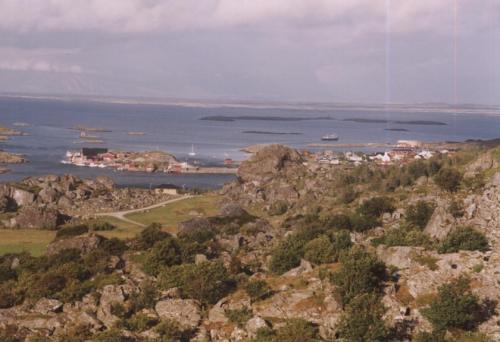
So after that final adventure I took a fast ferry back to the mainland, loitered around the aluminium-smelting town of Mosjeon for a day, and travelled by train, plane, plane and bus back to Dorset where Dad was waiting to collect me from the bus station at one o'clock in the morning. Home at last!